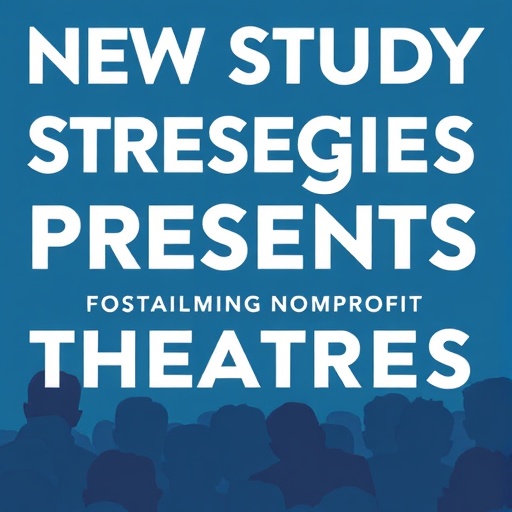Arts and culture have long been recognized as essential elements of society, enriching communities through creativity, expression, and shared experiences. Yet, beyond their cultural and social significance, these sectors have emerged as formidable economic drivers. In 2022 alone, nonprofit arts and cultural organizations contributed over $150 billion to the economy, underpinning millions of jobs and creating substantial tax revenue streams. Despite this impressive economic footprint, nonprofit arts organizations confront increasing instability and shifting landscapes that threaten their sustainability. To navigate this turbulent environment, a new guide draws from both empirical research and practical leadership experience to equip arts administrators with the entrepreneurial acumen necessary for long-term success.
The book, entitled Entrepreneurial Arts and Cultural Leadership: Traits of Success in Nonprofit Theatre, uniquely blends academic insights with real-world application. Coauthored by a Carnegie Mellon University researcher alongside the founder of one of America’s foremost theater companies, it responds to the urgent call for innovative leadership models within the nonprofit arts sector. The authors note that traditional nonprofit frameworks, often reliant on grants, donations, and ticket sales, must evolve to embrace entrepreneurial strategies that sustain and amplify artistic missions in the face of economic uncertainty.
Nonprofit arts organizations confront multifaceted challenges, chief among them fluctuating audience engagement patterns. The digital age, combined with evolving consumer preferences and competing entertainment options, demands that arts leaders rethink how they attract and retain patrons. The book situates these challenges within broader socioeconomic shifts that also influence donor behavior and funding priorities. Foundations and corporate sponsors are increasingly prioritizing equity, innovation, and measurable impact, creating new expectations for arts nonprofits to align their programming and outreach accordingly.
At the heart of the authors’ argument is the cultivation of leadership traits that foster innovation, adaptability, and resilience. Using Bethesda, Maryland’s Imagination Stage—a leading theater company for youth—as a detailed case study, the guide illustrates how visionary arts leadership can navigate crises without compromising artistic integrity. The Imagination Stage’s experience exemplifies how mission-driven entrepreneurship can balance the artistic and financial dimensions necessary to thrive in a competitive funding environment.
A core emphasis throughout the guide is the necessity of entrepreneurial thinking within arts leadership, which involves proactive risk management, opportunity recognition, and strategic reinvention. This mindset transcends mere financial survival; it integrates sustainable business practices that enhance artistic reach and organizational impact. Leaders who embody these traits not only secure diversified revenue streams but also galvanize their teams and communities toward shared visions of growth and inclusion.
Importantly, the book addresses internal organizational dynamics, recognizing that nonprofit success hinges on more than external fundraising efforts. Effective boards and staff committed to innovation create governance ecosystems that support calculated experimentation and long-term planning. By fostering a culture that values diverse perspectives and embraces change, nonprofit theaters can better position themselves as indispensable cultural institutions within their communities.
Community engagement emerges as another pivotal theme, with the authors advocating for deeper partnerships between nonprofit theaters and the populations they serve. Arts organizations must transcend traditional audiences by actively involving local stakeholders in program development and advocacy. Such reciprocal relationships not only expand audience bases but also reinforce the social relevance and accessibility of arts experiences, which is critical for mobilizing broader support networks.
The authors also delve into the imperative of advocating for equity and inclusion, highlighting the arts sector’s responsibility to mirror the diversity of contemporary society. This commitment extends beyond programming to influence hiring practices, board composition, and strategic priorities. Equitable leadership models enhance organizational legitimacy and foster innovative perspectives, thereby enriching the creative output and community resonance of nonprofit theaters.
Financial volatility remains an omnipresent concern, and the book prescribes pragmatic approaches to balancing risk with opportunity. Leaders are encouraged to develop flexible financial frameworks that incorporate contingency planning, diversified income portfolios, and transparent communication with stakeholders. This approach mitigates vulnerability while enabling organizations to seize emerging possibilities, whether through digital innovation or new collaborative ventures.
The guide also underscores the increasing role of technology in reshaping arts administration and audience engagement. From virtual performances to data-driven marketing strategies, technological tools offer avenues to broaden reach and deepen impact. However, successful integration requires leaders to possess both technological literacy and strategic foresight to harness these resources effectively.
Looking forward, Entrepreneurial Arts and Cultural Leadership positions itself as an essential resource not only for current arts managers but also for educators and students preparing to enter an evolving field. The blend of theoretical rigor with actionable recommendations provides a comprehensive framework for fostering sustainable nonprofit arts organizations that remain responsive to the complexities of today’s cultural and economic climates.
Ultimately, the book advocates for a paradigm shift toward leadership models that harmonize creative passion with entrepreneurial discipline. In doing so, it equips the nonprofit arts sector with the tools to maintain artistic excellence while securing financial and social vitality. With arts and culture poised at the intersection of economic impact and social change, this guidance offers a timely roadmap for fostering resilience and innovation in an uncertain future.
Subject of Research: Sustainability and entrepreneurial strategies in nonprofit arts and cultural leadership, with a focus on nonprofit theater management.
Article Title: Entrepreneurial Leadership: Navigating the Future of Nonprofit Arts Organizations
News Publication Date: Not provided
Web References: Not provided
References: Not provided
Image Credits: Not provided
Keywords: Cultural anthropology, Business, Corporations, Government, Finance




